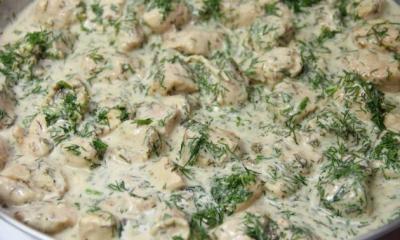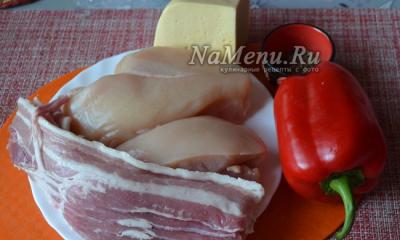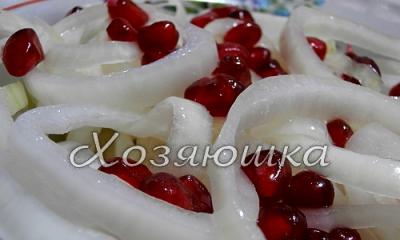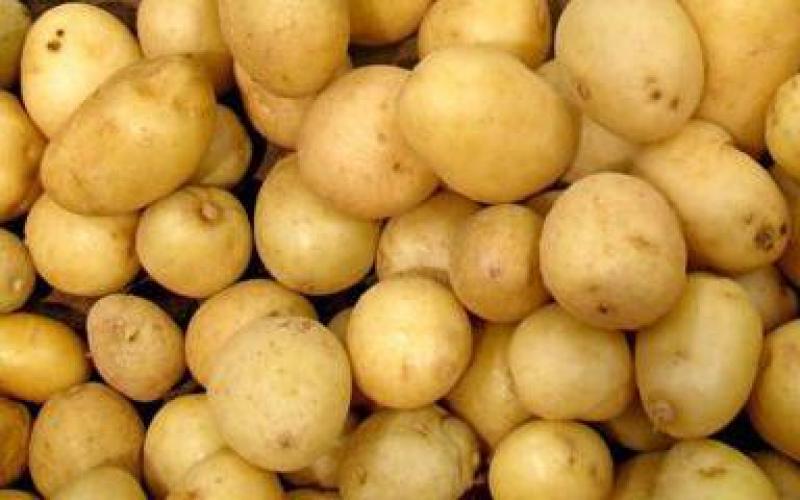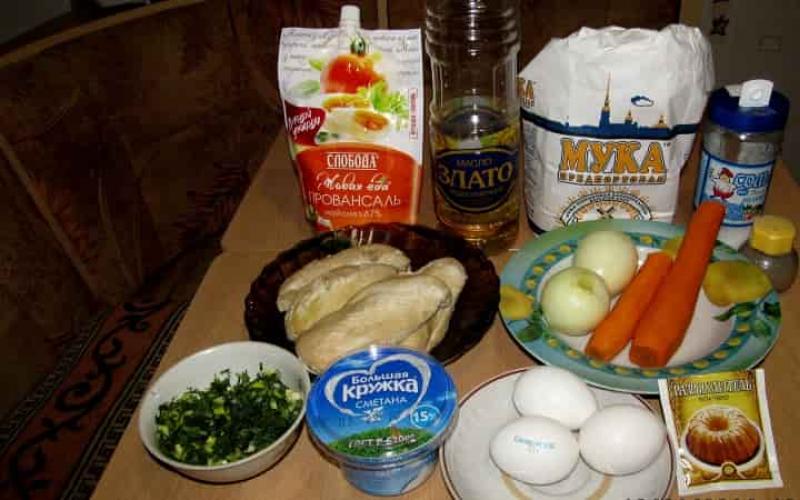The hunting season has begun. Each mushroom picker, as a rule, has his own special place where he goes to collect forest delicacy from year to year. And such places are always kept in the strictest confidence. However, everything secret sooner or later becomes clear.
The village of Sosnovo is famous for its locals they manage to pick mushrooms, going out for a walk with the dog or throwing out the trash. In general, it is not surprising, since the village is located almost in the middle of the forest. Pine forests are relatively dry, mixed, with a predominance of spruce and, of course, pine. Almost everywhere around Sosnovo, a variety of mushrooms are harvested - a very large territory of the Sosnovo rural settlement. Hunters for autumn delicacy note an abundance of black mushrooms, red and yellow russula, and are often found. In season and a good year, both porcini and mushrooms are harvested. You can get to Sosnovo by train from the Finland Station.
According to the reviews of mushroom pickers, you can pick up a full basket of mushrooms in the area of the Berngardovka railway station. True, it will take about half an hour to walk from the station to the forest. You can also get to Berngardovka by train departing from Finland Station.
The forests of the Snegirevka village (near Sosnovo) are mixed with a predominance of coniferous trees- will surprise any mushroom picker with a variety of mushrooms. Almost everything grows here - chanterelles, podgruzdki, mossiness mushrooms and ubiquitous. Also here it is quite possible to collect mushrooms and aspen mushrooms. It is convenient to get there by train to Sosnovo, and then by regular bus.
Read also: mushroom season in Samara region close to completion
Another village is famous for its mushroom deposits. In the forest near the village of Losevo, which is next to the Vuoksa River, there are white mushrooms, aspen mushrooms, birch mushrooms, oilers and flywheels, and you can pick up chanterelles in season. However, here you will have to compete in the speed of finding mushrooms with numerous other "hunters". You can get to Losevo by car or by train from Finlyandsky railway station to Losevo station or by bus from Sosnovo.
Some mushroom pickers advise collecting autumn gifts of the forest only near the Glass Village. They say that during the season you can pick up a lot of porcini mushrooms there. However, this place can only be reached by car.
The forests between the settlements of Borisovo and Michurinskoye in the Priozersky district are characterized by approximately one “product”. There are many black mushrooms and chanterelles. Less common are noble white, boletus and boletus. In addition to mushrooms, blueberries are harvested here, lingonberries and cranberries are found. You can get there by bus from Sosnovo.
On the Karelian Isthmus, noble mushrooms, according to experienced gatherers, are found at every turn.
The forests east of the Myllupelto station (the area bounded by the villages of Solnechnoye, Motornoe and Pochinok, 10-15 km southeast of Priozersk) are also famous for various mushrooms. This, according to mushroom pickers, is one of the most fruitful places. It is difficult to get there, so it is better to go by car.
Chanterelles are most often found on the islands near the village of Kuznechnoye. Although getting there is certainly not easy, here you need a car, and water transport is required.
But the easiest way to get to the forest near the village of Novoe Devyatkino is 10-15 minutes on foot from the Devyatkino metro station. True, the forest here is very humid. From August to October, during the season, you can even find porcini mushrooms near Novy Devyatkino.
The forest near Vyborg, on the contrary, is very dry. Therefore, in August - October, a real harvest of boletus, boletus and porcini mushrooms begins here. You can get there by car or by train from Finland Station or by bus from Grazhdansky Prospekt metro station.
And the last we know mushroom place- a forest near the village of Sinyavino in the Kirovsky district. You can find any mushrooms here - from butter and russula to porcini. There is one “but” in this forest: during the Great Patriotic War there were fierce battles here, so there were funnels that you can easily fall into. You can get there without a car, by bus from the metro station "Ulitsa Dybenko".
The hot, but at the same time rainy summer has done its job. Already from mid-July, mushrooms began to appear near St. Petersburg, moreover, in large quantities! This means that now is the time to take a bigger basket, put on a panama hat on your head, and rubber boots on your feet and go to the forest. In which? Here you will be helped mushroom card prepared by Komsomolskaya Pravda.
1. POSELOK KUZNECHNOE
Coordinates: 61.7, NL 29.52 E
How to get there: perhaps the most difficult route (you will need a boat), but also the most profitable. You can get to Kuznechny by train from the Finland Station, and then move to the islands.
What is: knowledgeable people it is said to be the best place in the area to collect chanterelles.
2. VYBORG
Coordinates: 60.70 N 28.75 E
How to get there: you can get to Vyborg from the Finland Station. You can also get there by car along the Vyborg highway, or by bus from the Grazhdansky Prospekt metro station.
What to eat: the forest near Vyborg is very dry. Therefore, during the season, you can often find boletus, boletus, and porcini mushrooms here. Prepare a big basket!
3. VILLAGE ZAKHODSKOE
Coordinates: 60.24 N 29.21 E
How to get there: also move towards Vyborg, but get off a little earlier, at the Zakhodskoye station.
What to eat: in the surrounding forests you can find mossiness mushrooms, aspen mushrooms and harvest a rich crop of porcini mushrooms.
4. LOSEVO VILLAGE
Coordinates: 60.40 N 30.00 E
How to get there: you can get to Losevo by train from Finlyandsky railway station to Losevo station or by bus from Sosnovo.
What to eat: there are porcini mushrooms, aspen mushrooms, birch boletus, butterdish and mossiness mushrooms.
5. VILLAGE MIRUCHINSKOE
Coordinates: 60.33 N 29.51 E
How to get there: minibus No. 678 goes to Michurinsky from Ozerki, or you can get to Sosnovo, and from there by bus.
What to eat: chanterelles and black milk mushrooms. You can also find boletus, boletus, white, but much less often.
6. VILLAGE SOSNOVO
Coordinates: 60.33 s. sh. 30.14 E
How to get there: by direct train from Finland Station. Travel time: about 2 hours.
What to eat: The variety of mushrooms is impressive. Here you can find mushrooms, boletus, flywheels and butterflies.
7. THE VILLAGE OF BERNGARDOVKA
Coordinates: 60.00 N 30.36 E
How to get there: only half an hour from the Finland Station or by taxi along the Road of Life. And another half an hour walk to the forest.
What to eat: near Bernhardovka you can find chanterelles, birch boletus and even white ones.
8. VILLAGE NEW DEVYATKINO
Coordinates: 60.3 N 30.28 E
How to get there: the most accessible, and therefore the most difficult site in terms of mushroom competition. You can also get there by metro. And then - go deeper into the forest.
What to eat: a wide variety of mushrooms. There are even porcini mushrooms.
9. PINE FOREST
Coordinates: 59.89 N 29.08, east
How to get there: electric trains run from the Baltic Station, and fixed-route taxis from Avtovo. Getting into the city itself is not easy. The Leningrad NPP is located there, so you may be asked for special permission. And passports.
What to eat: boletus and mossiness mushrooms.
10. KINGISEPP
Coordinates: 59.37 N 61.3 E
How to get there: fixed-route taxis from Ligovsky Prospekt metro station.
What to eat: chanterelles, white, boletus, boletus.
11. SINYAVINA VILLAGE
Coordinates: 59.54 N, 31.04 E
How to get there: the settlement is located 45 km southeast of St. Petersburg. You can get there by your own car or train.
What to eat: butterflies, chanterelles and mushrooms grow in the forests around the village, sometimes you can find porcini mushrooms and mushrooms. But that's if you're lucky.
12. THE VILLAGE OF VYRITSA
Coordinates: 59.24 N, 30.20 E
How to get there: located 60 km south of St. Petersburg. It is very convenient to go by electric train from the Baltic Station.
What to eat: since the end of July, chanterelles, milk mushrooms and russula grow abundantly in these forests.
13. STEKOLNOE VILLAGE
Coordinates: 59.33 s. sh., 30.54 E
How to get there: by train or minibus to Tosno, and then by bus to Stekolny.
What to eat: they say there are most mushrooms here. Well, other, less elite mushrooms, no one canceled.
14. MOUNTAIN VILLAGE
Coordinates: 59.45 N 30.57 E
How to get there: By train from the Moscow railway station towards Volkhov or Kirishi.
What to eat: chanterelles, russula and mushrooms grow here. On good days, you can also find porcini mushrooms.
Each mushroom picker, as a rule, has his own special place where he goes to collect forest delicacies. "Sankt-Peterburg.ru" declassifies mushroom places in Leningrad region.
The hunting season has begun. Each mushroom picker, as a rule, has his own special place where he goes to collect forest delicacy from year to year. And such places are always kept in the strictest confidence. However, everything secret sooner or later becomes clear. Guided by this rule, Saint Petersburg.ru declassifies mushroom places in the Leningrad Region.
Where to look for mushrooms:
The village of Sosnovo is famous for the fact that the locals manage to pick mushrooms, going out for a walk with the dog or throwing out the trash. In general, it is not surprising, since the village is located almost in the middle of the forest. Pine forests are relatively dry, mixed, with a predominance of spruce and, of course, pine. Almost everywhere around Sosnovo, a variety of mushrooms are harvested - a very large territory of the Sosnovo rural settlement. Hunters for autumn treats note the abundance of black mushrooms, red and yellow russula, chanterelles and bitters are often found. In the season and a good year, both porcini mushrooms and aspen mushrooms are harvested. You can get to Sosnovo by train from the Finland Station.
According to the reviews of mushroom pickers, you can pick up a full basket of mushrooms in the area of the Berngardovka railway station. True, it will take about half an hour to walk from the station to the forest. You can also get to Berngardovka by train departing from Finland Station.
The forests of the village of Snegirevka (near Sosnovo) - mixed with a predominance of coniferous trees - will surprise any mushroom picker with a variety of mushrooms. Almost everything grows here - chanterelles, podgruzdki, mossiness mushrooms and the ubiquitous russula. Also here it is quite possible to collect mushrooms and aspen mushrooms. It is convenient to get there by train to Sosnovo, and then by regular bus. Mushroom picker's map Another village is famous for its mushroom deposits. In the forest near the village of Losevo, which is next to the Vuoksa River, porcini mushrooms, aspen mushrooms, birch boletus, oilers and flywheels come across, and you can pick up chanterelles in season. However, here you will have to compete in the speed of finding mushrooms with numerous other "hunters". You can get to Losevo by car or by train from Finlyandsky railway station to Losevo station or by bus from Sosnovo.
Some mushroom pickers advise collecting autumn gifts of the forest only near the Glass Village. They say that during the season you can pick up a lot of porcini mushrooms there. However, this place can only be reached by car.
The forests between the settlements of Borisovo and Michurinskoye in the Priozersky district are characterized by approximately one “product”. There are many black mushrooms and chanterelles. Less common are noble white, boletus and boletus. In addition to mushrooms, blueberries are harvested here, lingonberries and cranberries are found. You can get there by bus from Sosnovo.
On the Karelian Isthmus, noble mushrooms, according to experienced gatherers, are found at every turn.
The forests east of the Myllupelto station (the area bounded by the villages of Solnechnoye, Motornoe and Pochinok, 10-15 km southeast of Priozersk) are also famous for various mushrooms. This, according to mushroom pickers, is one of the most fruitful places. It is difficult to get there, so it is better to go by car.
Chanterelles are most often found on the islands near the village of Kuznechnoye. Although getting there is certainly not easy, here you need a car, and water transport is required.
But the easiest way to get to the forest near the village of Novoe Devyatkino is 10-15 minutes on foot from the Devyatkino metro station. True, the forest here is very humid. From August to October, during the season, you can even find porcini mushrooms near Novy Devyatkino.
The forest near Vyborg, on the contrary, is very dry. Therefore, in August - October, a real harvest of boletus, boletus and porcini mushrooms begins here. You can get there by car or by train from Finland Station or by bus from Grazhdansky Prospekt metro station.
And the last mushroom place known to us is a forest near the village of Sinyavino in the Kirovsky district. You can find any mushrooms here - from butter and russula to porcini. There is one “but” in this forest: during the Great Patriotic War, fierce battles took place here, so there were funnels that you can easily fall into. You can get there without a car, by bus from the metro station "Ulitsa Dybenko".
Note: - Most people think that mushrooms should be looked for further away. This is partly true. However, most often it is in those places where no one is looking for that mushrooms grow.
- Mushrooms never grow alone. If you spot something, be sure to stop right there and look at your feet. There must be someone hiding there.
- If you don't know what kind of mushroom - don't take it. At any slightest suspicion, it is better to just leave the mushroom in the forest. Remember, life is more precious.
- It is best to collect mushrooms in baskets of willow twigs or in baskets of birch bark. In plastic bags and buckets, they quickly deteriorate due to the lack of air exchange.
- In no case do not take already rotten mushrooms. Even if the rotten part is removed, the flavor and health benefits of the fungus may suffer.
- Overripe and soft mushrooms, as well as wormy ones, are also not worth taking.
Mushroom Legends:
- They say that mushrooms in the forest do not just live. They are bred by mosquitoes. For people to come to their homes.
- It is believed that frogs can lead to mushrooms. Especially the smallest ones. Follow the frog and sooner or later you will come to the boletus or some other mushroom.
What mushrooms grow in the forests of the Leningrad region:
Butter dish. It got its name because of the oily, slippery to the touch cap. The characteristic features that distinguish most species of oil from other mushrooms of this species are the sticky mucous, easily removable skin of the cap and the ring. 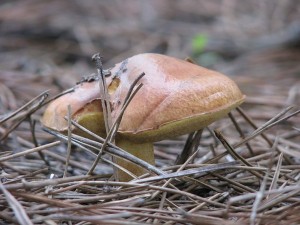 Boletus. Often grows along the edges of forest roads. Hat up to 15 cm in diameter, hemispherical, later cushion-shaped, naked or thin-felt, dry, slightly slimy in wet weather. The color of the mushroom can vary from light gray to dark brown.
Boletus. Often grows along the edges of forest roads. Hat up to 15 cm in diameter, hemispherical, later cushion-shaped, naked or thin-felt, dry, slightly slimy in wet weather. The color of the mushroom can vary from light gray to dark brown. 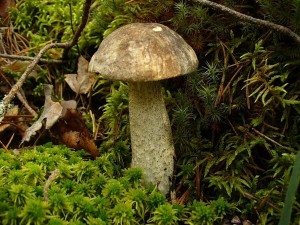 Boletus. It often occurs from the second half of June to October. Grows in large colonies. The cap of the mushroom is up to 25 cm in diameter, at first cap-shaped with edges pressed to the stalk, later cushion-convex. The color of the mushroom cap can also be bright red, orange, gray, white. The pulp is white, dense, thick, reddening, turning green and, finally, blackening on the cut.
Boletus. It often occurs from the second half of June to October. Grows in large colonies. The cap of the mushroom is up to 25 cm in diameter, at first cap-shaped with edges pressed to the stalk, later cushion-convex. The color of the mushroom cap can also be bright red, orange, gray, white. The pulp is white, dense, thick, reddening, turning green and, finally, blackening on the cut. 
Honey agaric. It grows in large groups from late August to late autumn on stumps, roots, dead and living trunks of deciduous, mainly birch, less often coniferous trees, sometimes in nettle thickets. Caps up to 13 cm in diameter, in young mushrooms are spherical, with an edge bent inward, then flat-convex with a tubercle in the center. The color of the cap is gray-yellow, yellow-brown with shades, darker in the center, with thin small, sometimes absent brown scales.


